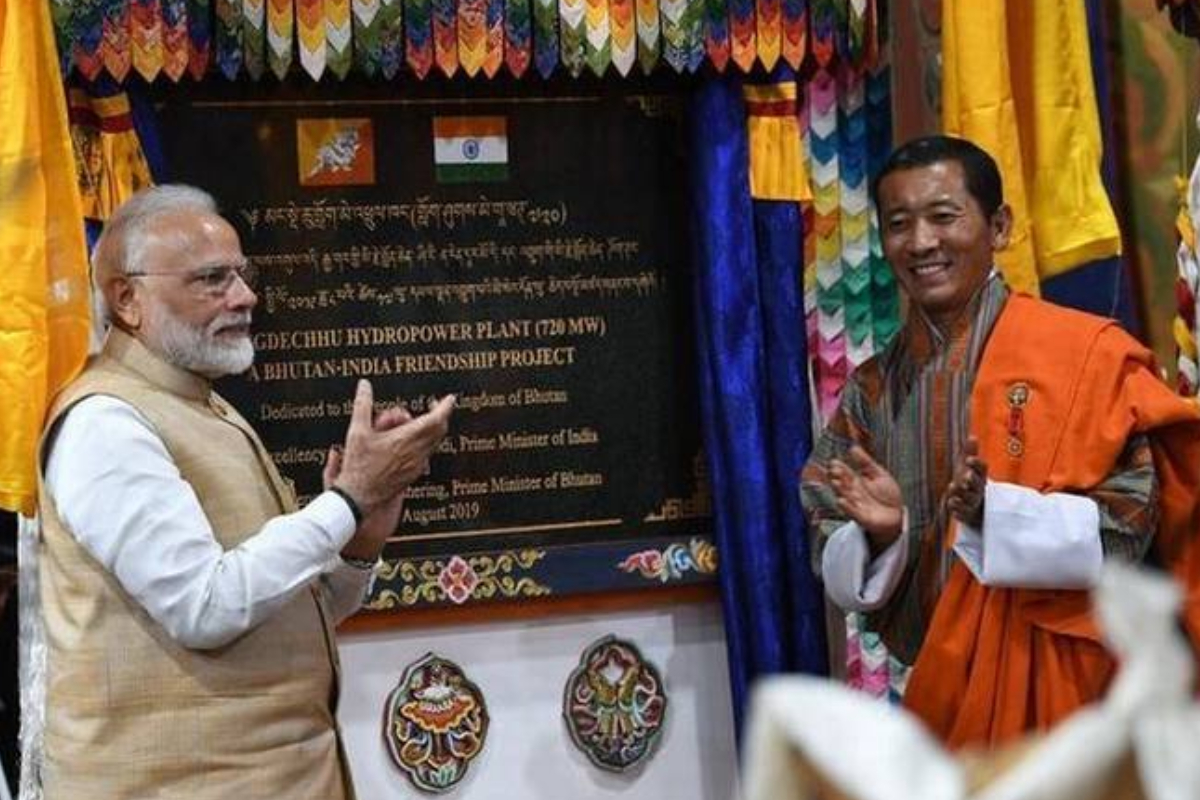After over 30 years of bilateral energy cooperation between Bhutan and India, it appears both countries are re-examining the venture to accelerate hydropower development as envisioned earlier.
However, both countries are equally looking forward to enhancing cross-border electricity trade (CBET) in the region, going by what was discussed at the Think Tank Forum conference on CBET, organised by the South Asian Regional Initiative for Energy Integration in New Delhi today.
Notwithstanding the benefits of Indian investment in Bhutanese hydropower plants, some hiccups in implementing the 1,200 MW Punatshangchhu-I, unreasonable delays in commissioning of 1020 MW Punatshangchhu II and more recently, the termination of 600 MW Kholongchhu projects, have put the scheme to a standstill.
Bhutan installed 2,136 MW of hydropower under the inter-governmental (IG) model. These projects are financed by India through a loan component, which ranges from 60 to 70 per cent of the project cost, and the remainder comes in as a grant from the government of India.
To this effect, the power purchase agreement was signed to facilitate the export of surplus electricity to India at a mutually agreed tariff determined on the cost-plus model. The power export tariff to India ranges from ₹2.25 to ₹4.12 per unit of electricity, which is one of the cheapest in the region. In other words, generation costs in Bhutan are the lowest in the region and this benefits India.
Since the commissioning of Chukha Hydropower in 1986, which was the first IG model of hydropower development, Bhutan has seen a structural shift in its economy – from an agrarian to an industrial one. Export revenue from hydropower constitutes about 27 per cent of the national revenue for Bhutan. Further, electricity earns tradeoffs of at least ₹10 bn of trade deficit the country faces.
Despite these positive aspects, the external debt burden from the loan component of hydropower has raised concerns after the debt to GDP ratio of Bhutan crossed 100 per cent.
Numerous studies have been conducted to mitigate the risk associated with the 1200MW Punatshangchhu-I hydroelectric project with no result. The relocation of the dam site has put the project in a state of limbo as it encountered geological surprises. Time and cost overrun of these projects with 100 per cent deviation from the initial estimated cost are proving to be a challenge, questioning the commercial viability on both sides.
A Bhutanese hydropower expert said that it is largely to do with the grey area in terms of how the governance and management of the IG model are structured with no clear accountability and decision-making authority since multiple parties from both countries are involved.
This points to the fact that there are some institutional flaws with the IG model and that an innovative approach to hydropower development would be required.
To explore the JV model, 600MW Kholongchhu was placed on the cards. Because the two partners, Satluj Jal Vidyut Nigam (SJVNL) and Druk Green Power Corporation, were unable to reach an agreement, the project was shelved earlier this year, despite the fact that ancillary works began five years ago.
On the other hand, Bhutan has already cleared its plans to embark on building mini hydropower plants to cater to the rising domestic demand in the coming years. This is a short-term solution.
Initially, bilateral cooperation between India and Bhutan aims at installing hydropower plants in Bhutan with a total capacity of 10,000 MW by 2020. To take it forward, an inter-governmental Agreement on the Development of Joint Venture Hydropower Projects has since been signed on April 22, 2014. However, not even half the target is realised today.
While Indo-Bhutan energy cooperation has already become a model that the Asian Development Bank is promoting for SAARC countries about the clean development mechanism and carbon credits, with climate change forcing the glacial to recede, questions are also being raised about the future of hydropower. Glacial lakes contribute between 13 and 49 per cent of the water to Bhutanese river systems.
Despite the difficulties, both countries have strong friendship ties, which are expected to result in an innovative, cost-effective, and mutually beneficial approach to energy cooperation.
Bhutan’s hydroelectricity potential stands at 30,000 MW, of which about 23,000 MW is said to be economically viable.










